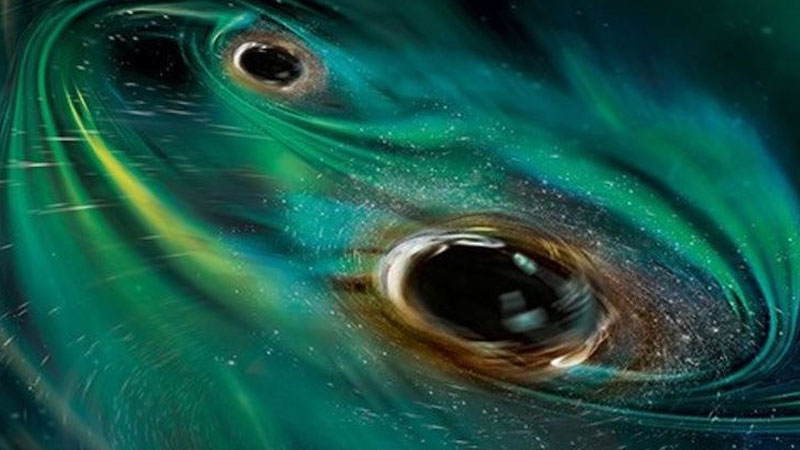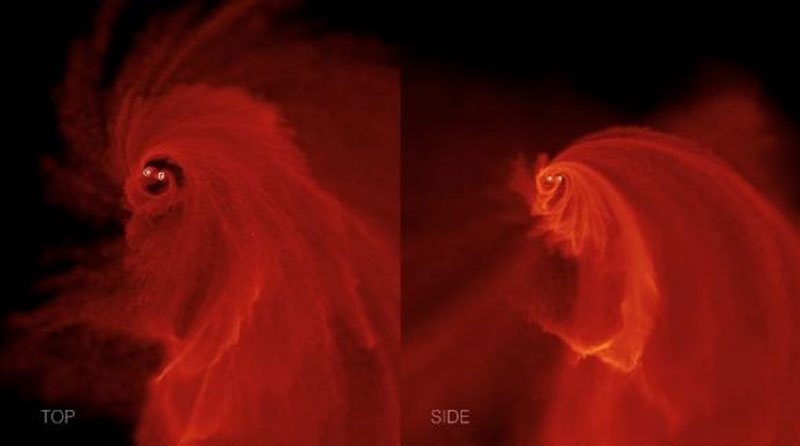In March 2021, an outbreak was recorded in a galaxy far, far away, which was mistaken for a supernova and assigned the index 2021hdr. A year later it burned again. And when the installation for searching for transients began to collect data. Zwicky at the Palomar Observatory, outbreaks began to be recorded every 60–90 days. Supernovae don’t behave that way. This “disco” of universal proportions was caused by something else, and the answer was soon found.

An artistic representation of the merger of a pair of black holes involving a cloud of gas. Image source: NASA
Based on first impressions, scientists considered the tidal disruption of the star to be a black hole. However, the duration of the repeated flares turned out to be so long that no star would be enough for all the observed effects. There was clearly something different here.
A few years earlier, a group of scientists simulated the capture of a cloud of molecular gas by a system of two black holes rotating around a common center and approaching merger. This model best explained the flares observed in the 2021hdr event area. Two black holes churned up the cloud and absorbed its matter in portions, converting accretion into bursts of energy. X-ray and ultraviolet flares were later detected in this area by the Swift X-ray Observatory.

Simulation of the phenomenon. Image source: F. Goicovic et al. 2016
A set of data collected in different ranges made it possible to calculate that there, at a distance of approximately 1 billion light years from Earth, in the constellation Cygnus, a pair of black holes with a total mass of 40 million solar masses rotates around a common center of gravity. They are located at a distance of 26 billion km from each other and complete one revolution every 130 days. It would take the light a day to cross the space between them. In 70 thousand years, these black holes will merge. In their reality, this already happened a billion years ago, but the echo of this collapse will reach us only across the abyss of time.
If it weren’t for a cloud of interstellar gas that accidentally met on their way, we would never have known that in the center of the galaxy 2MASX J21240027+3409114 there is such a whirlwind of black holes. Now scientists intend to study this galaxy more closely and assess how much a pair of merging black holes affects it and nearby stars.